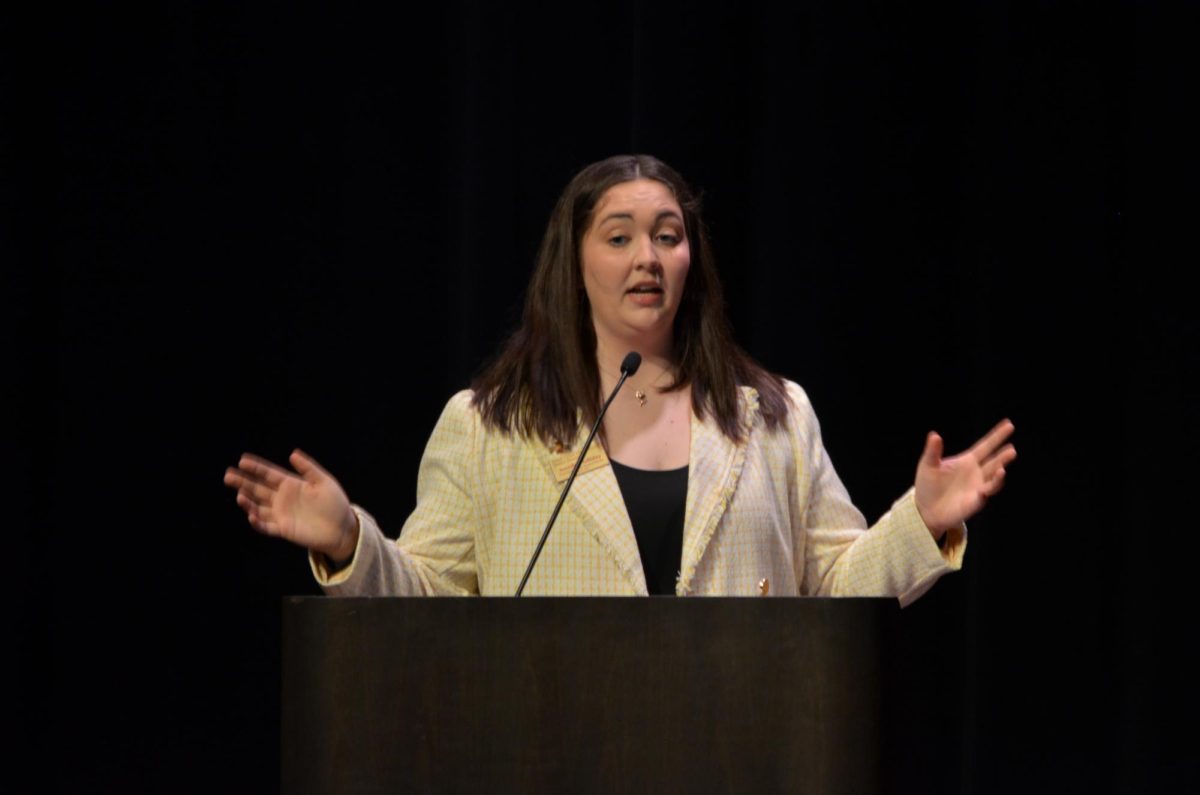Ward: ‘Fifty Shades of Grey’ crosses the line
Columnist Ward argues that ‘Fifty Shades of Grey’ pushes beyond the limits of what is acceptable in a healthy relationship.
February 12, 2015
It’s nearly Valentine’s Day and now, more so than any other time of year, we become suckers for a good love story. Maybe it’s because the story is so well scripted that we lose ourselves in the elaborateness of it all or because we want so desperately for the story to wash over our lives so that we can experience it ourselves. When you think of popular love stories in the recent years like “The Fault in Our Stars,” “The Notebook” or “P.S. I Love You,” getting lost in the story doesn’t cause any harm because the movies didn’t glorify what is wrong with society. That is, until now.
Women across the country succumbed to the twisted “love story” between Christian Grey and Anastasia Steele back in 2011 when “Fifty Shades of Grey,” written by British author EL James, hit bookshelves across the world. Long and graphic, story short, the book is about an innocent college student, Anastasia, and a business titan, Christian, who engage in various acts of sadism and masochism, which promptly motivated me to not finish the horrid and extremely scarring book.
First of all, I find it unmistakably ironic that women have been flocking to this book since it came out. I’m fairly sure they do because they think it’s this new amazing addition to popular literature, but in my eyes, the only legacy this book will leave is that sexual violence against women and domestic abuse is okay. One would think that women would be offended by this book and by the fact that it will soon be in theaters everywhere because it is our gender being treated as a man’s play thing.
It’s been a slow progression but gradually, sex has gone from an important thing to something meaningless and in this case, glamourized and accepted abuse. The sad thing is that this book, and the movie, is a Hollywood version of what women actually experience in abusive relationships. 1 in 4 women will experience domestic abuse in their lifetime, so the fact that this author chose to take something that is all too real to too many women is a sadistic act in and of itself.
Domestic abuse is not the only negative connotation this franchise has produced. The other very important aspect that this movie is going to create is undoubtedly how this generation views sex and its consequences.
As I already mentioned, there has been a big switch in how people view the severity of sex. It used to be a hush-hush conversation and something that people shouldn’t do unless he put a ring on it. But now, it’s very much the opposite, with the exception on rare occasions, young adults take sex as seriously as they do board games.
The reason for this, I believe, is that during the years, our exposure to sex has reached monumental heights. According to a study conducted by Pew Research, 62 percent of people say that sex on television can cause early sex in young adults. Additionally, 77 percent of people believe there is too much pre-marital sex on television.
Although this particular column focuses on the effects of “Fifty Shades of Grey,” I believe that this movie is simply the match that we’re going to use to light the fuse for what is viewed as acceptable sexual behavior. Before long, I wouldn’t be too surprised if more films that are essentially porn with a plot line hit theaters on a regular basis because no one said that Fifty Shades was over the thin grey dividing line.

















